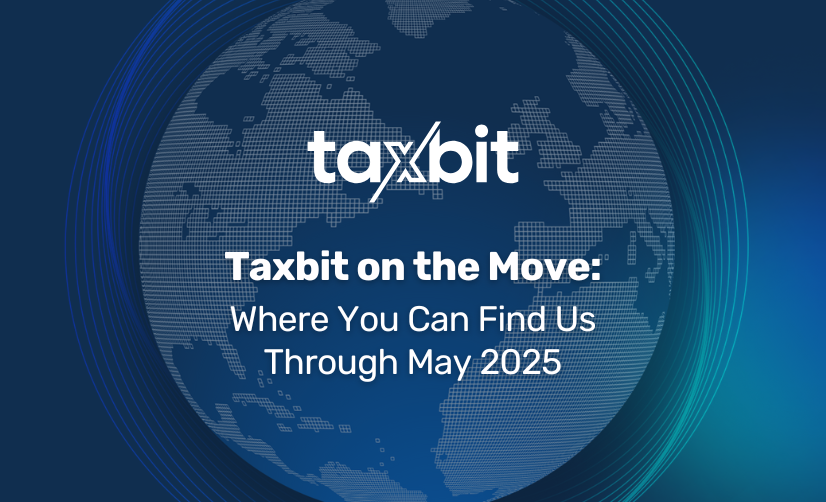Discover how the new IRS Form 1099-DA will impact digital asset reporting. Our guide offers crucial insights into compliance, the implications of a potential asset registry, and how Taxbit’s solutions can simplify your processes.
The IRS’s unveiling of the draft Form 1099-DA represents a significant shift in the financial reporting landscape, particularly for enterprises engaged with digital assets. As this form is still in draft mode and the regulations are not yet final, understanding its nuances is crucial for large organizations. This analysis provides an enterprise-focused perspective on what to expect and how to prepare.
Understanding Form 1099-DA
The Form 1099-DA represents the implementation of the Congress’s creation of a tax-information-reporting regime for digital assets that is intended to ease the reporting burden on taxpayers and close the current gaps in tax collections. Last fall, Treasury published its proposed regulations outlining the requirements. Those regulations have not yet been finalized, but today’s release of the draft Form 1099-DA represents the practical implementation of those proposed rules, identifying what information will need to be reported and how the information will be structured.
The draft form requires detailed information such as the type of digital asset, the quantity involved, and transaction identifiers, which necessitates a high level of diligence from reporting enterprises.
Differing from its predecessors like Form 1099-B, the new form incorporates specific enhancements to address the unique challenges of digital asset transactions:
- Business Type Identification: A new checkbox to identify the filer’s type of business, including payment processors, aligns with emerging digital transaction norms and regulatory focuses.
- Detailed Asset Reporting: The form is designed with separate boxes for asset identification codes, unit numbers, and a backup box for unregistered assets, suggesting the potential development of a regulated digital asset registry.
These two items provide insight on how the information will be used by the IRS. Historically, analogous forms have yet to capture this level of detail or structure the information reporting in this way. By receiving information in this manner, the IRS is likely thinking of better ways to work with the data obtained, which makes sense because Form 1099-DA only represents one of three separate forms that will ultimately be implemented as a result of the IIJA. The IRS’s ability to work with data from all three forms will be needed to optimize the information it received.
Strategic Planning: How Enterprises Should Prepare for Form 1099-DA
Strategic planning is essential to integrate these new reporting standards seamlessly. The introduction of Form 1099-DA signals a move towards more rigorous data handling and reporting standards, which will have several implications for enterprises:
- Enhanced Reporting Accuracy: The detailed boxes for asset codes and quantities aim to improve the accuracy and granularity of the data collected, allowing for more precise financial oversight and regulatory compliance.
- Potential for a Digital Asset Registry: The IRS’s approach indicates a move towards standardized asset identification, which could simplify the process but requires enterprises to update their tracking and reporting systems to align with new standards.
- Increased Compliance Requirements: With specific requirements for detailing digital asset transactions, enterprises must ensure that their financial reporting systems can handle these requirements efficiently.
Implementing Best Practices for Digital Asset Compliance
The operational impacts of Form 1099-DA are significant, requiring enterprises to assess and possibly upgrade their financial systems:
- System Upgrades: Enterprises may need to invest in advanced software and systems to handle the detailed reporting requirements, mainly if a digital asset registry is established.
- Data Security and Privacy: Potentially sensitive information such as wallet addresses and transaction hashes are included in the data, so enterprises must bolster their cybersecurity measures to protect this data while ensuring compliance.
- Regulatory Alignment: Enterprises must stay abreast of changes in the final regulations to tailor their compliance strategies effectively.
Conclusion
For enterprises, the draft Form 1099-DA is not just a new reporting requirement—it’s a precursor to more comprehensive changes in the regulatory landscape of digital assets. Preparing for these changes involves understanding the specifics of the new form and anticipating its impacts on data management and compliance strategies.
Ready to Optimize Your Compliance with IRS Form 1099-DA?
Taxbit is here to assist you in navigating the complexities of digital asset reporting and compliance. With our enterprise-grade solutions tailored for businesses like yours, you can ensure accuracy, security, and readiness for the upcoming regulatory changes. Don’t wait to get ahead—contact our experts today to see how we can streamline your digital asset reporting and enhance your compliance strategy.
Let Taxbit help you turn regulatory challenges into opportunities.








